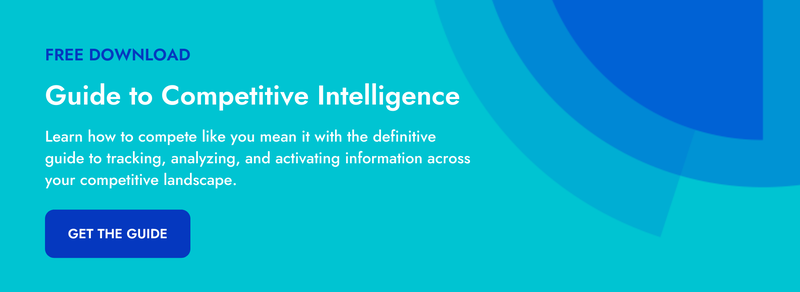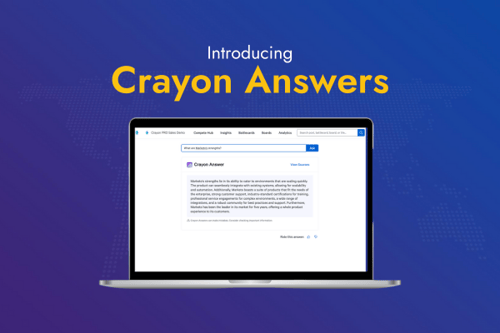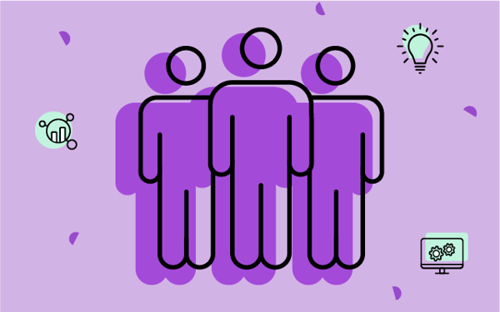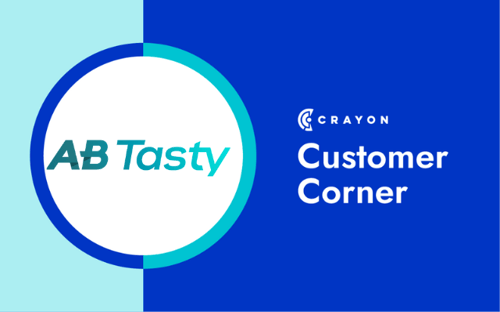As we glide into a new month, you know what that means — a new episode of Into the Fray: The Competitive Intelligence Podcast has arrived!
In our latest installment, guest host Will Thompson sat down with Matt Powell, leader of Competitive and Market Intelligence at Later, to dive deep on the role competitive intelligence plays in product-led growth models.
Unlike sales-led growth, product-led growth emphasizes the user’s experience with a product and their continued engagement with the product.
Later, the social media planning and scheduling platform, doesn't have a large sales team anxious to dive into the newest competitor battlecard. But understanding the market and competitive landscape is just as critical.
3 Ways to Use Competitive Intelligence to Boost Product-Led Growth | Matt Powell, Leader of Competitive and Market Intelligence at Later
According to Matt Powell, competitive intelligence provides value for product-led companies by allowing them to better understand the user’s experience. By using CI to determine the features and user interaction with similar platforms, Matt can make recommendations that will drive growth at Later.
Although strategies for product-led growth can differ from strategies used by a sales-led company, Matt said that the underlying principles are the same.
“Sure, there’s more variety in the ways that I’m applying things, but at the same time the objective is still the same, just in a different context,” said Matt.
Let’s take a closer look at three ways Matt and his team use CI at Later.
1. Reenergize Your Brand
One of the biggest things that stood out for Matt when he joined Later was the way customers were focused on the features and tools offered by the platform, and how they compared to other social media scheduling tools.
So, when it came to differentiating Later, Matt saw an opportunity to focus on messaging, brand-building, and added value for users.
“Later is very well-known in our space as a brand, because we have incredible content offerings,” he said. “We’ve become known as a really important resource for people in the social media space.”
By tapping into this information about competing platforms, Later was able to identify a target market that was under-served by some of the other social media tools. Whereas other companies focused on social media managers and enterprise teams, Later was able to hone their products and messaging to appeal to creators and influencers.
2. Understand Why Customers Churn
With subscription-based products like Later, one of the most valuable pieces of information is why a customer may cancel their service or move to another platform.
“I spend a lot of time on churn, because expansion and retention is massively important to the health of a product-led company, ” Matt said.
To that end, Matt focuses on where the users who are moving away from Later end up going to instead. For example, if another platform is attracting a lot of users over Later, that can help Matt and his team understand where to invest time and resources so that Later can better meet those users’ needs.
To do so, Matt works with Later’s retention team to collect and analyze data from customer feedback surveys to determine the top reasons why customers may move from Later to a competitor, and then use that data to figure out how to differentiate from other products.
3. Experience Your Competitors' Products Firsthand
One big benefit of product-led vs sales-led is the ability to get a direct look at your competition’s products. (This works if some of your competitors are also product-led.) According to Matt, being able to access competitor’s products can be extremely valuable — especially when all you have to do is sign up with an email address to tap into the intel.
“We can take things a step further and not just rely on the data, I can actually go into the product and experience what other people are doing to solve problems, and get ideas for how we can differentiate ourselves,” Matt said.
This enables Matt and his team to better understand how users interact with competitor’s products — from the onboarding process, to the user-friendliness of the interface, to the different features that are promoted.
“That’s where helping CS becomes really interesting,” Matt said. “They can go, ‘Hey, this might work for someone else, why don’t we try it?’”
Want to start using competitive intelligence at your product-led company?
Whether your business focuses on product-led growth or sales-led growth, competitive intelligence gives you valuable insights that will increase revenue and attract more customers.
To start enabling your team with competitive intelligence like Matt at Later, download our Guide to Competitive Intelligence today!
.jpg)
Related Blog Posts
Popular Posts
-
 The 8 Free Market Research Tools and Resources You Need to Know
The 8 Free Market Research Tools and Resources You Need to Know
-
 How to Measure Product Launch Success: 12 KPIs You Should Be Tracking
How to Measure Product Launch Success: 12 KPIs You Should Be Tracking
-
 24 Questions to Consider for Your Next SWOT Analysis
24 Questions to Consider for Your Next SWOT Analysis
-
 How to Create a Competitive Matrix (Step-by-Step Guide With Examples + Free Templates)
How to Create a Competitive Matrix (Step-by-Step Guide With Examples + Free Templates)
-
 6 Competitive Advantage Examples From the Real World
6 Competitive Advantage Examples From the Real World




